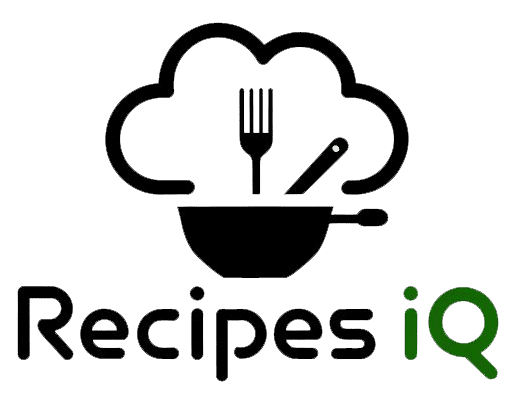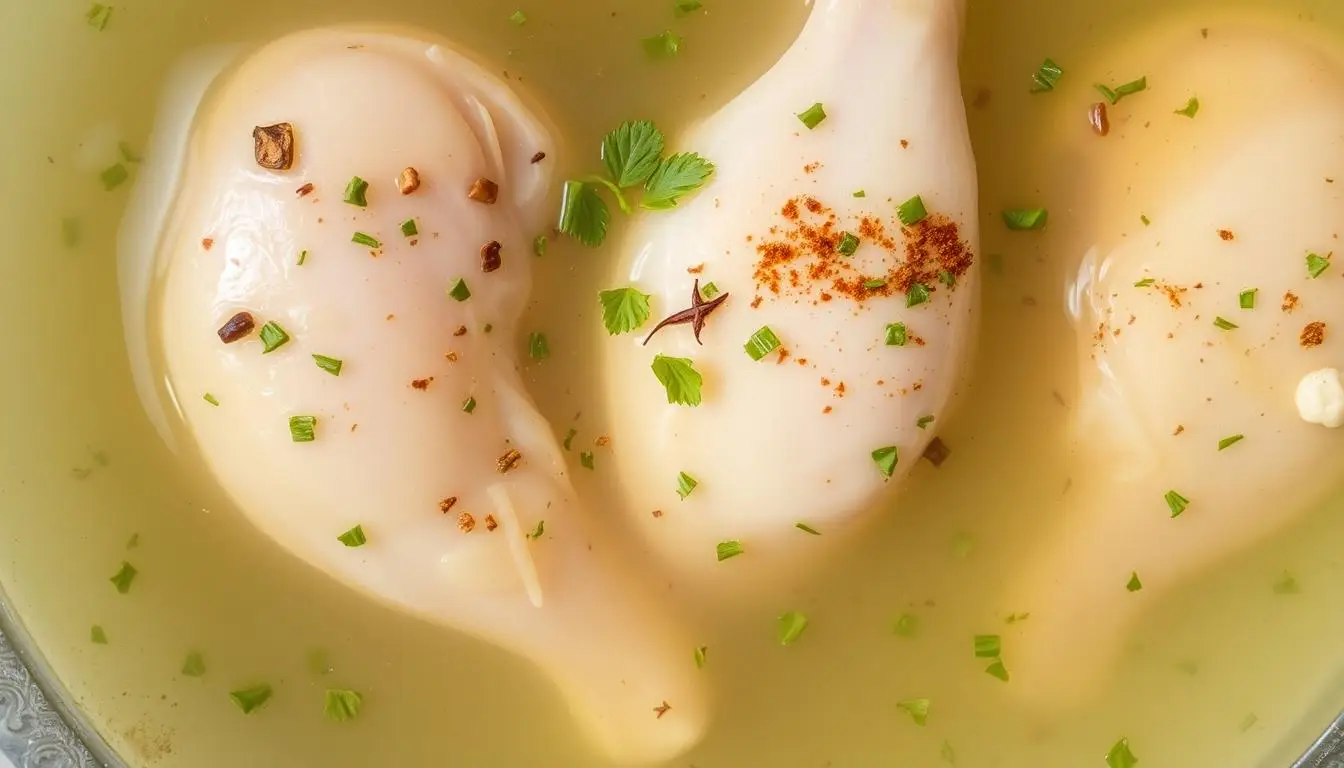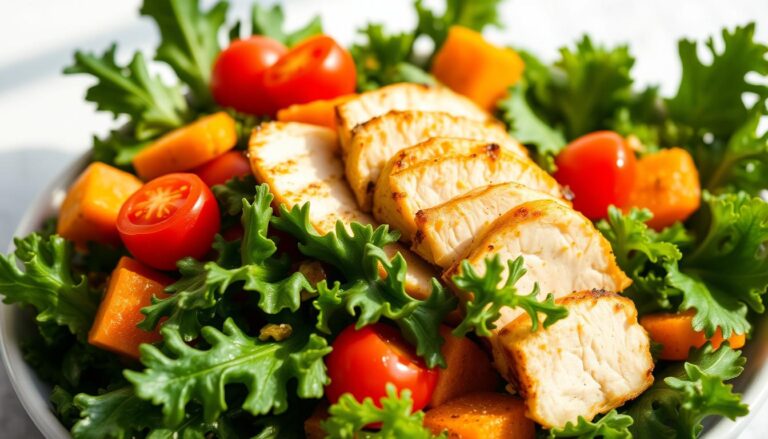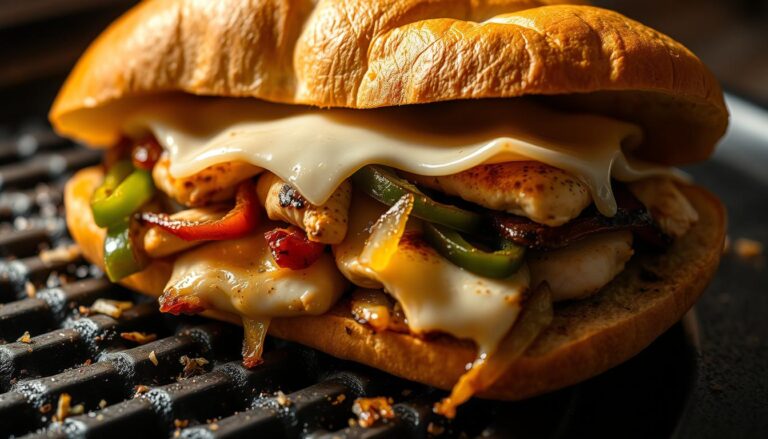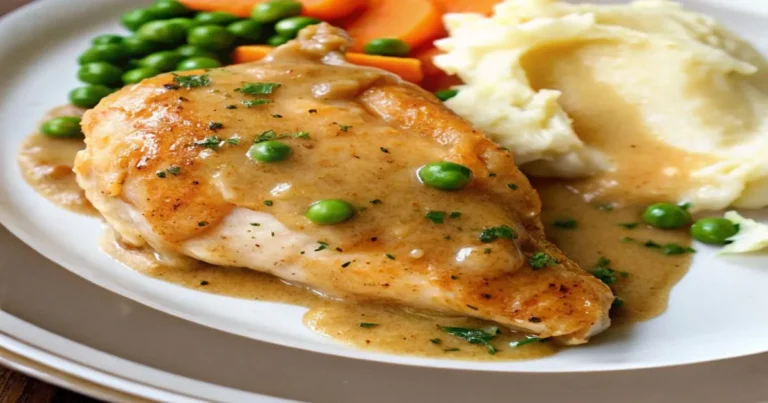Ultimate Guide to Chicken Brine Methods
Table of Contents
Imagine biting into a juicy, tender chicken dish. Every bite is a perfect mix of flavor and moisture. This is what a well-crafted chicken brine can give you. It’s a process where chicken is soaked in a mix of water, salt, and sometimes sugar and other flavorings before cooking.
Mastering the art of chicken brine is a big win for any cook. A good brine can turn a simple dish into something amazing. In this guide, you’ll learn how to make your chicken moist and tender every time. You’ll also explore different ways to brine chicken.
Introduction to Chicken Brine
Brining is a simple yet powerful technique. It can make a big difference in your cooking. By soaking chicken in a brine solution, you add moisture, tenderness, and flavor to your dishes.
Whether you’re making a classic roasted chicken or a juicy grilled chicken, a good brine is key. It’s the secret to success.
Key Takeaways
- Learn how to create a basic chicken brine recipe
- Understand the science behind brining and how it affects your chicken
- Discover the essential equipment you need to get started with brining
- Explore different chicken brine methods and techniques
- Master the art of achieving moist, tender results every time
- Get inspired by new and exciting chicken brine recipes
- Take your cooking to the next level with the ultimate guide to chicken brine methods
Understanding the Science Behind Chicken Brine
To master chicken brining, you need to know the science. Learning how to brine chicken breast shows how osmosis balances solutes inside and outside chicken cells. This makes the chicken tender and juicy. A good chicken brine recipe uses osmosis, salt, and moisture to get the right texture.
Knowing these basics lets you tweak your brine recipes. For example, salt concentration affects flavor and texture. Whether you’re brining chicken breast or making a custom recipe, understanding the science is crucial.
Exploring chicken brining, you’ll find different techniques like wet and dry brining. Each has its own advantages and disadvantages. Grasping the science helps you pick the best method for your dishes. With this knowledge, you’ll create tasty dishes that show off your brining skills.
Essential Equipment for Brining Chicken
To start brining, you’ll need the right equipment. A large container that can fit your chicken and the brine solution is essential. You can use a food-grade plastic bucket or a large pot with a lid. Make sure it’s clean and sanitized before use. A refrigerator is also necessary to keep the chicken and brine at a safe temperature.
Other useful utensils include a whisk for mixing the brine chicken recipe, a meat thermometer for ensuring the chicken is cooked to a safe internal temperature, and a wire rack for drying the chicken after brining. For a fried chicken brine recipe, you may also need a deep frying pan or a deep fryer.
Here’s a list of equipment you’ll need:
- A large container or pot with a lid
- A refrigerator
- A whisk
- A meat thermometer
- A wire rack
- A deep frying pan or deep fryer (for fried chicken brine recipes)
Having the right equipment will make the brining process much easier and more efficient. It’s also important to follow safe food handling practices to avoid contamination and foodborne illness.
Basic Chicken Brine Recipe and Ratios
To brine chicken breast, you need to know the basic recipe and ratios. A brine solution has water, salt, and sometimes sugar and flavorings. Finding the right salt-to-water balance is key for texture and flavor.
When making a brine, you can add garlic, herbs, and spices for extra flavor. It’s also important to keep the brine at a safe temperature. This prevents bacterial growth.
Salt-to-Water Proportions
A common rule is 1 cup of kosher salt for every 1 gallon of water. You can adjust this to taste. The type of salt used can change the chicken’s flavor and texture.
Optional Aromatics and Seasonings
Some great optional ingredients for chicken brine include:
- Garlic
- Herbs like thyme and rosemary
- Spices such as black pepper and paprika
- Citrus zest and juice
Temperature Guidelines
Keeping the brine solution at 38°F to 40°F is crucial. This range prevents bacterial growth. Store the brine in the fridge to keep it at a consistent temperature.
Different Types of Chicken Brine Methods
There are many chicken brine methods to choose from. Each has its own benefits and drawbacks. Finding the right one depends on what you’re aiming for, whether it’s a tasty fried chicken brine or a simple recipe.
Moisture retention is a key factor. Wet brining soaks the chicken in a brine solution. Dry brining uses a spice mix for flavor and texture. Injection brining injects the brine into the chicken for deep flavor.
Wet Brining Technique
This method dips the chicken in a brine of water, salt, and sugar. It’s great for juicy, flavorful fried chicken. It helps keep the chicken moist and tender.
Dry Brining Approach
Dry brining uses a spice mix to flavor the chicken without a brine. It’s perfect for a crispy, caramelized crust and juicy inside. It’s also easy to make and delicious.
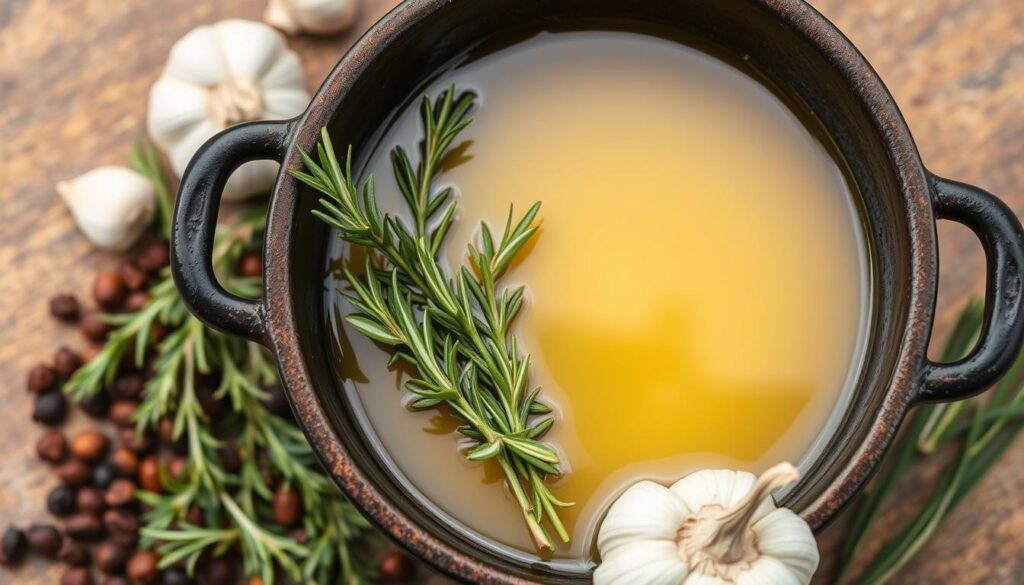
Injection Brining Method
Injection brining injects the brine into the chicken for deep flavor and moisture. It’s ideal for flavorful, moist fried chicken without long brining times.
Brining Times for Different Chicken Cuts
When you’re how to brine chicken breast, the right brining time is key. It makes the chicken tender and full of flavor. The time needed changes based on the chicken cut and size.
For instance, chicken breasts need less time than thighs or wings.
To figure out the best brining time, think about these things:
- Chicken cut: Breasts, thighs, wings, or drumsticks
- Size: Small, medium, or large
- Desired level of flavor and moisture
For smoked chicken brine, longer brining can boost flavor and texture. But, don’t brine too long. It can make the chicken too salty or soft. Here’s a rough guide for brining times:
- Chicken breasts: 30 minutes to 2 hours
- Chicken thighs: 2-4 hours
- Chicken wings: 2-4 hours
Brining is all about finding the perfect mix of flavor and texture. Knowing the best brining times for each chicken cut helps you make delicious, tender dishes every time.
Brining is an art that requires patience and practice. With the right techniques and guidelines, you can create mouth-watering dishes that will impress your family and friends.
Creating Flavored Brines for Enhanced Taste
Creating a tasty chicken brine recipe is all about exploring new flavors. You can mix and match ingredients to make a brine that’s uniquely yours. For instance, you can add herbs or spices to your fried chicken brine for a special twist.
Think about what flavors you like in your chicken brine. Do you enjoy herb-infused tastes, like thyme or rosemary? Or do you prefer citrus-based flavors, such as lemon or orange? Maybe you like sweet and spicy flavors, with a mix of sugar and hot peppers. You can make a brine that matches your taste perfectly.
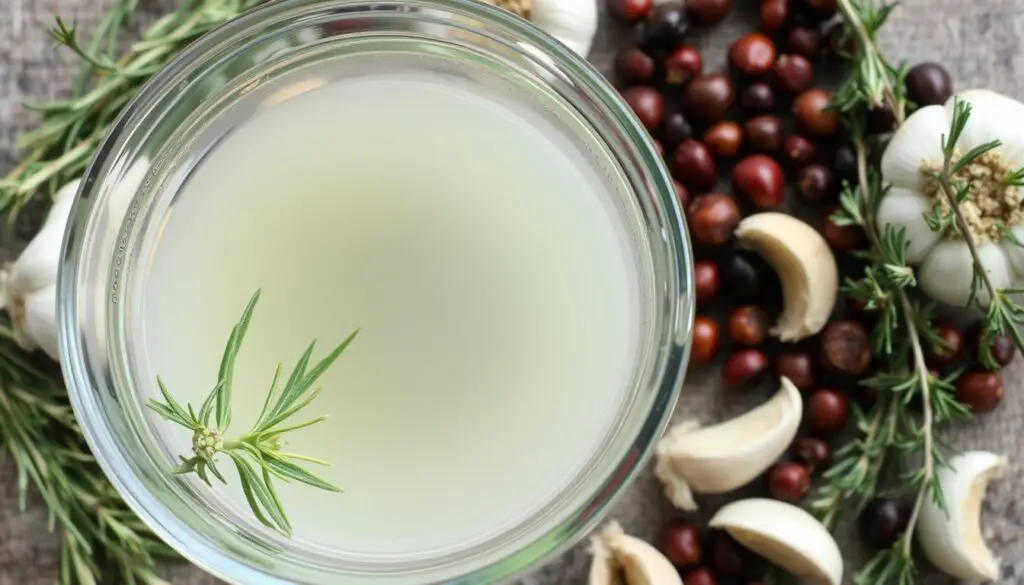
- Herb-infused brines: Try adding fresh herbs like thyme, rosemary, or parsley to your brine solution for a fresh and savory flavor.
- Citrus-based solutions: Add slices of lemon, orange, or lime to your brine for a bright and citrusy flavor.
- Sweet and spicy variations: Mix in some sugar and hot peppers, like jalapenos or habaneros, for a sweet and spicy flavor.
Creating a great flavored brine is all about experimenting and having fun. Don’t hesitate to try new combinations and adjust the flavors to your liking. With a bit of practice, you’ll be making delicious chicken dishes with your own special brines. You’ll even impress your family and friends with your tasty fried chicken brine.
| Flavored Brine | Ingredients | Taste |
|---|---|---|
| Herb-Infused | Thyme, rosemary, parsley | Fresh and savory |
| Citrus-Based | Lemon, orange, lime | Bright and citrusy |
| Sweet and Spicy | Sugar, hot peppers | Sweet and spicy |
Special Brine Recipes for Specific Cooking Methods
Choosing the right brine recipe is key for cooking chicken. Whether you’re frying, smoking, or grilling, a special brine can make your chicken perfect. For crispy fried chicken, you need a brine that makes the outside crunchy and the inside juicy.
For smoked chicken, a brine with brown sugar, apple cider vinegar, and spices is best. It balances the smoky flavor. A fried chicken brine might include buttermilk, hot sauce, and garlic for a crispy, spicy taste.
Here are tips for special brine recipes for different cooking methods:
- For fried chicken, use a brine with acidic ingredients like buttermilk or vinegar. They help create a crispy exterior.
- For smoked chicken, a brine with sweet ingredients like brown sugar or honey is good. It balances the smoky flavor.
- For grilled chicken, try a brine with herbs like thyme or rosemary. They add depth and complexity to the flavor.
Using the right brine recipe can make your chicken perfect every time. Whether it’s fried chicken, smoked chicken, or grilled chicken, a special brine takes your dish to the next level.
Common Brining Mistakes to Avoid
Learning how to brine chicken breast means knowing what to avoid. Over-brining or under-brining can ruin the chicken’s texture and taste. It’s crucial to understand the right brining times and methods for your recipe.
Common errors include using too much salt, not watching the temperature, and not adjusting brining time for the chicken cut. Understanding these mistakes will help you make a tasty and moist chicken dish. Here are some key mistakes to avoid:
- Over-brining: This can make the chicken too salty and dry.
- Under-brining: This can result in a lack of flavor and moisture.
- Incorrect temperature: Brining at the wrong temperature can lead to food safety issues.
To perfect your chicken brine recipe, follow the guidelines for brining chicken breast. Use the right amount of salt, keep an eye on the temperature, and adjust brining time for the chicken cut. By avoiding these common mistakes, you’ll get perfect results every time.
By being mindful of these common mistakes, you can create a mouth-watering chicken dish that’s full of flavor and moisture. Always follow the guidelines for how to brine chicken breast and adjust your chicken brine recipe accordingly.
| Mistake | Effect | Solution |
|---|---|---|
| Over-brining | Dry and salty chicken | Reduce brining time |
| Under-brining | Lack of flavor and moisture | Increase brining time |
| Incorrect temperature | Food safety issues | Monitor temperature closely |
Food Safety and Storage During the Brining Process
When working with chicken brine, food safety is key to avoid bacterial growth. Follow these guidelines to handle and store chicken safely during brining. Knowing about temperature control, brining time, and storage is crucial for a tasty and safe dish.
Temperature control is vital when making a chicken brine. The best temperature for brining chicken is between 38°F and 40°F. This stops bacteria from growing, keeping your chicken safe to eat. Always keep your brine chicken recipe in the fridge to keep the temperature steady.
Temperature Control Guidelines
- Store your chicken brine in the refrigerator at a temperature between 38°F and 40°F.
- Use a food thermometer to ensure the temperature remains consistent.
- Never leave your chicken brine at room temperature for an extended period.
By following these tips and using a good chicken brine recipe, you can make a delicious and safe meal. Always put food safety first when working with chicken brine to avoid health risks.
Maximum Brining Duration
The brining time depends on the chicken type and flavor level you want. Generally, brine chicken for no more than 24 hours. This prevents bacteria growth and keeps your chicken safe.
| Chicken Type | Maximum Brining Duration |
|---|---|
| Whole Chicken | 24 hours |
| Chicken Breasts | 12-18 hours |
| Chicken Thighs | 18-24 hours |
By following these guidelines and using a reliable chicken brine recipe, you’ll create a delicious and safe dish for your family.
Conclusion: Mastering Your Chicken Brining Technique
Learning to brine chicken takes time and effort, but it’s worth it. By understanding the science and trying different flavors, you can make fried or smoked chicken that’s always moist and tasty. Always follow food safety rules to get the best results.
With every batch, you’ll get better and more confident. Feel free to try new recipes and flavors to find what you like best. Perfecting your brining skills will make your chicken dishes a hit with everyone. They’ll love the juicy, flavorful chicken you make.
FAQ
What is the purpose of brining chicken?
What is the basic brine recipe for chicken?
How long should I brine chicken?
Can I brine chicken for too long?
Do I need to rinse the chicken after brining?
Can I brine chicken in a plastic bag?
What is the difference between wet brining and dry brining?
Can I brine chicken for fried chicken?
Can I brine chicken for smoking?
What are some common mistakes to avoid when brining chicken?
Have you given our recipe a try?
There are no reviews yet. Be the first one to write one.
